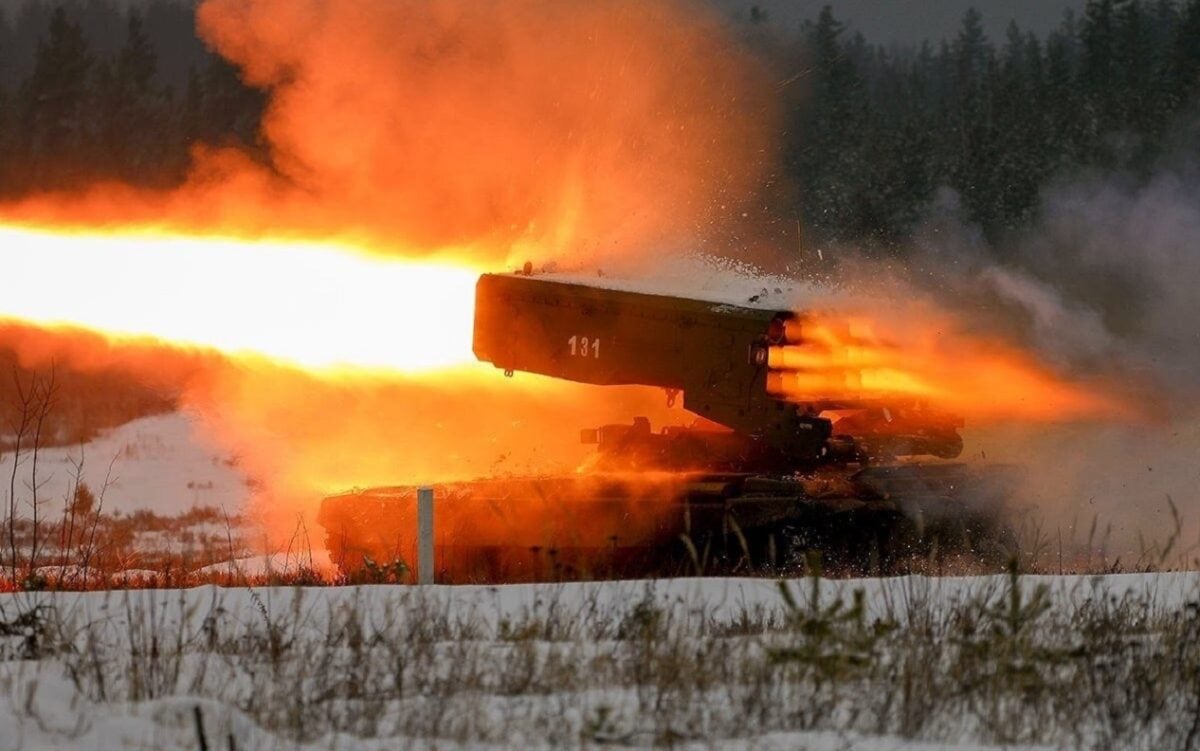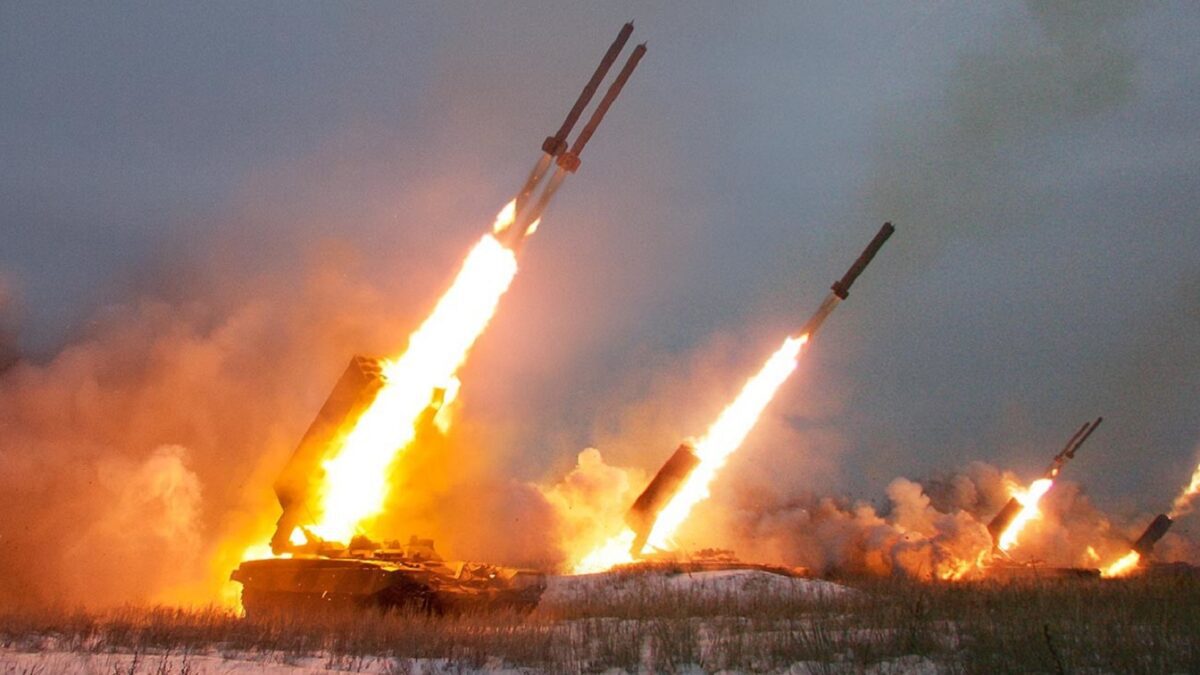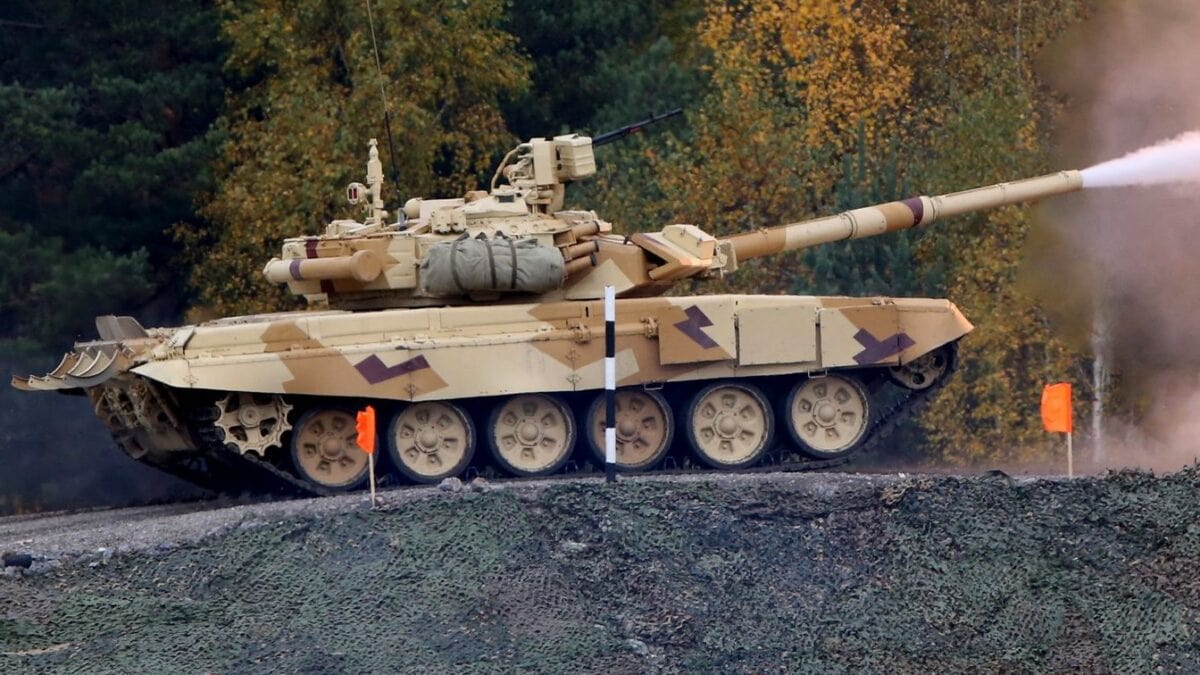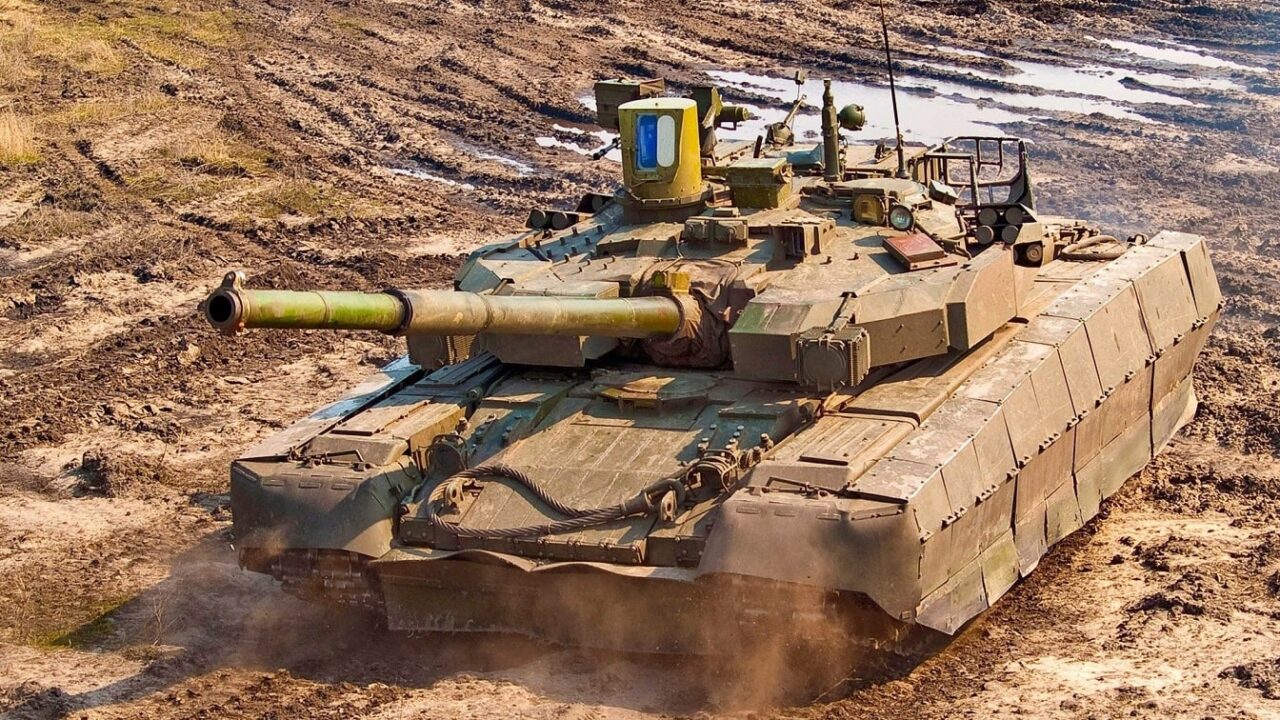Here’s Where Russian Forces Are Deployed Around Ukraine—And It Looks Like Kyiv May Be in the Crosshairs: The buildup of Russian military forces around Ukraine that began in October 2020 rolls steadily onward in late January as armored vehicles, artillery, and air defense systems based across Russia continue to. But since an earlier survey of Russian forces around Ukraine published in December 2021, roughly half of the combat strength from Russia’s Eastern Military District has deployed into Belarus. And worryingly, the concentration of forces there and in parts of northwestern Russia just a few hours drive away from Kyiv suggest that the Ukrainian capital could be in Putin’s crosshairs.
Counting Russian Military Battalions and Brigades
As detailed in a prior article, the key maneuver element deployed by Russia is the battalion tactical group (BTG) counting between 600-1,000 personnel. These ad-hoc units combine a battalion of mechanized infantry and tanks (40-50 armored fighting vehicles) with an unusually large quantity of artillery (12-18 systems) and other support units. A Russian regiment or brigade typically can form two BTGs, while a division ordinarily can form six or eight BTGs.
Besides BTGs, longer-range artillery, missiles, and electronic warfare units would also serve as key enablers of any Russian offensive. Particularly suggestive equipment sighted moving towards Ukraine include pontoon bridges (to cross rivers), “high power” self-propelled artillery (203-millimeter 2S7 Pion howitzers and 240-millimeter 2S4 Tyulpan mortars), Iskander ballistic missile systems to execute precision strikes from over 300 miles away, and long-range S-300V mobile air defense systems capable of missile defense.
Other logistical details, such as reports that Russia is stockpiling blood supplies, hint at preparations to potentially fight a real war, not just posturing at the possibility.
Summarized below are troop dispositions that were identified by satellite and social media imagery as of January 28, 2021, drawing again on the more detailed list maintained by military analyst Konrad Muzyka of Rochan Consulting. Bear in mind, there are surely other units that have not been identified and/or reported by open sources.
The Belarus Approach
Brest (Southwestern Belarus)
2x BTGs from 36th & 37th Motor Rifle Brigades
1x BTG from 98th Air Assault Division
Rechitsa (Southeastern Belarus)
2x BTGs from 5th Tank Brigade
165th Artillery Brigade
Yelsk and Kozenki (Just west of Rechitsa)
1x BTG from 38th Motor Rifle Brigade
1x BTG 69th Border Defense Brigade
Baranovichi (western central Belarus)
2x BTGs from 155th Naval Infantry Brigade of the Pacific Fleet
Asipovichy (eastern central Belarus)
107th Missile Brigade (Iskander-M)
Other Dispatched Eastern Military District Units (Location Unknown)
14th Spetsnaz (Special Forces) Brigade
3x BTGs from 37th, 64th Motor Rifle Brigade and 114th Motor Rifle Regiment
2x Air Assault BTGs from the 83rd and 111th Air Assault Brigades
338th Rocket Artillery Brigade (BM-27 Uragan)
Perhaps the most ominous indicator of Moscow’s intentions has been the time-consuming movement by rail of an estimated 15-20 BTGs from Russia’s faraway Eastern Military District into Belarus. This development also revealed that Belarus’s dictator Lukashenko would allow Russia to use his country as a staging ground for action against Ukraine.
That not only forces Ukraine’s military to defend 400 more border miles from potential attacks, but opens the possibility of a pincer encirclement of Ukraine’s capital of Kyiv from both sides of the Dnieper river, advancing down the E95 highway on the eastern side, and the P02 and P28 roads to the west.
The Northwestern Approach
Local Forces
The 144th Motor-Rifle Division of the 20th Combined Arms Army (CAA) at Smolensk, consisting of two infantry and one under-strength tank regiment at Klintsy and Yelnya.
(*Note that the locally-based divisions also have integral artillery regiments and other combat support units not listed for sake of brevity.)
External Reinforcements at Yelnya:
6x Battalion Tactical Groups from the 35th, 55th and 74th Motor Rifle Brigades Divisions
1x BTG from 90th Tank Division (T-72BA and T-72B3)
1x Battalion of Iskander ballistic missiles
1x Company of TOS-1A thermobaric rocket systems
1x Artillery battalion of BM-27 Uragan rocket launchers
External Reinforcements at Klimovo and Rozhny
3x BTGs from the 90th Tank Division (T-72BA and T-72B3; BMP-2s, BTR-82s)
Though located 150 miles north of the Ukrainian border, Yelnya is where Russia’s current buildup first became evident. Forces at Yelnya could advance to the southwestern stretch of the Russia Ukraine border, perhaps linking up with units at Klintsy, Klimovo, and Rozhny already fairly close to Ukraine. But troops at Yelniya could alternately transit westward into Belarus and then join units barreling towards Kyiv down the E95 highway.

Russian TOS-1
The Northeastern Approach
Local Forces:
The 3rd Motor Rifle Division of the 20th CAA, with one tank and two (going on three) infantry regiments based around Valyuki, Soloti, and Boguchar, and the 236th artillery brigade at Kolomna.
External Reinforcements at Pogonovo Training Range (near Voronezh)
3x BTGs from 4th Tank Division (T-80U, BMP-2)
2x BTGs from 2nd Motor Rifle Division (T-80, T-90, BMP-2, BMP-3)
1xs battalion from the 288th Artillery Brigade (BM-27)
1x Company of TOS-1A thermobaric rocket systems
External Reinforcement Postoyalye Dvory (near Kursk, 100 miles north of Kharkiv)
2x BTGs from 25th and 138th Motor Rifle Brigade of the 6th Combined Arms Army
Troops in this sector could head directly south to expand the zone held by pro-Russian forces in Eastern Ukraine; or more rapidly roll southwest to invest Kharkiv, Ukraine’s second-largest city. Capturing or bypassing Kharkiv would open avenues to advance on the major cities of Poltava, Dnipro, and Zaporizhzhia.
The Southern Approach: Crimea and Rostov-on-Don
Local Forces:
The 150th Motor-Rifle Division of the 8th CAA, (consisting of two rifle regiments and two tanks regiments) is based at Rostov-on-Don and Persianovskiy. Additionally, the 20th Motor-Rifle Division is currently forming at Volgograd and the 238th Artillery Brigade is at Korenovsk.
Two brigades are based in Crimea under the 22nd Corps—the mechanized 126th Coastal Defense Brigade, and the 810th Naval Infantry Brigade. Facilities to host paratroopers of the 56th Air Assault Regiment are also under construction in Crimea.
External Reinforcements: Crimea
2x Motor Rifle Battalions from 136th Brigade
Additionally, ballistic missile, artillery and air defense assets of the 58th Combined Arms Army have remained in Crimea since Spring 2021. 3-4 more BTGs from the 58th and 49th armies are reported in the area
Forces in Crimea could project deadly missile/artillery attacks or push north to seize cities along the southern Dnieper river. Forces at Rostov-on-Don might attempt again to capture Mariupol and from there seek to create a land corridor to the Crimean peninsula.
Amphibious Forces
As detailed in this earlier article, the Russian Navy has dispatched six tank landing ships (LSTs) for ‘exercises’ in the Mediterraneanadjacent to the Black Sea. These could potentially be carrying one or two BTGs from the 336th Naval Infantry Brigade based in Kaliningrad.
When combined with 7 or 8 LSTs in the Black Sea Fleet and three larger Alligator class landing ships, Russia has sealift for a brigade of naval infantry. Naval infantry forces around the Black Sea include the 810th brigade in Crimea and two naval infantry BTGs from the Caspian Sea flotilla’s 177th regiment moved up to Krasnodar Krai.
Amphibious landings are highly risky operations, and Russian military planners would face complicated risk-reward calculations. However, the mere presence of undeployed amphibious forces imposes dilemmas by forcing Kyiv to set aside troops for coastal defense.

Image of Russian TOS-2 Weapons. Image Credit: Creative Commons.
Separatists Inside Eastern Ukraine
Two entities controlled and armed by Russia, the self-proclaimed Donetsk and Luhansk People’s Republics, ostensibly dispose of 14 brigades or regiments, and hold territories around the cities of the same name. Though equipped with hundreds of armored vehicles and artillery systems, and incorporating some Russian military personnel, they are less capable than regular forces. However, they would still assist any Russian military action, serving as defensive screens and holding terrain to free up regular BTGs for offensive missions.
Wild Card: Russia’s Airborne Forces
Russia has three elite Air Assault Divisions in its Western Military District. Because airborne formations can be airlifted rapidly to the theater, they are estimated capable of contributing up to 14-17 BTGs to a Ukraine operation. Unlike western airborne forces, VDV paratroopers (desantniki) have lightweight BMD armored fighting vehicles which can be dropped by parachute to provide transportation and fire support.
The VDV could in theory carry out airborne landing operations deep inside Ukraine to disrupt supply lines and divert troops. However, these would be extremely risky, and require thorough suppression of air defenses as a prerequisite. Instead, paratroopers can also be landed at airports close to the frontline to rapidly surge combat power. Paratrooper subunits may also be inserted by helicopter (without their BMDs) to seize key objectives.
Russia’s Objectives
Setting aside Moscow’s absurd demands for NATO restructuring, its primary fixation is preventing Ukraine from joining NATO and receiving military aid from NATO members.
If the military buildup were a highly expensive bluff, or Putin decides the costs of war are too high, the hair-raising buildup could conclude without a shot fired. But analysts fear Putin wouldn’t accept the loss of credibility from backing down.

Russian T-90 Tank. Image Credit: Creative Commons.
Hypothetically, to cut losses while saving face, Putin might order a limited attack, even if it fails to enduringly stall Kyiv’s partnership with the West.
But most military analysts argue methodical military buildups do not happen at a whim, and that Putin may believe the costs of military action are preferable to allowing Ukraine to continue on its current trajectory defying Moscow’s influence.
Perhaps then Putin might launch a violent but limited duration war similar to Russia’s 2008 conflict with Georgia, aimed at debilitating the Ukrainian military and forcing Kyiv to capitulate without getting bogged down in urban sieges and long-term occupation.
However, military analyst Michael Kofman argues the possibility of a worst-case scenario—full-scale invasion and occupation—is significant. He contends Moscow likely thinks military coercion will not stick, given Ukraine’s refusal to implement the Minsk II agreement following coercive Russian actions in 2015. Combined with the scale of the Russian buildup, that suggests Putin may pursue the extensive occupation of Ukrainian territory, including seizure of Kyiv and installation of a pro-Moscow government to guarantee Ukraine, or at least its eastern half, falls back under Moscow’s influence.
Russia vs. Ukraine: Signs of an impending attack?
Russian forces are already positioned to launch offensive operations on fairly short notice. But ‘short notice’ still involves a massive surge of logistical activity and redeployment prior to kinetic action. That’s because the re-deployed ground forces are densely concentrated in bases dozens of miles away from the border; and Russia has primarily transported heavy equipment and vehicles, while leaving behind many of the personnel to operate that equipment.
That means initiating hostilities would entail flying in thousands of soldiers from across Russia. Then BTGs would roll out to staging points at the border and assume dispersed combat formations to minimize vulnerability to Ukrainian fires. Furthermore, short-range warplanes of Russia’s tactical air force (VKS) across Russia would begin redeploying to bases in range to support operations in Ukraine.
Those movements can be executed very rapidly, which is why they haven’t taken place yet. But if detected early enough, they would betray the likelihood of imminent attack within hours or a couple days.
Sébastien Roblin writes on the technical, historical, and political aspects of international security and conflict for publications including the 19FortyFive, The National Interest, NBC News, Forbes.com and War is Boring. He holds a Master’s degree from Georgetown University and served with the Peace Corps in China. You can follow his articles on Twitter.

